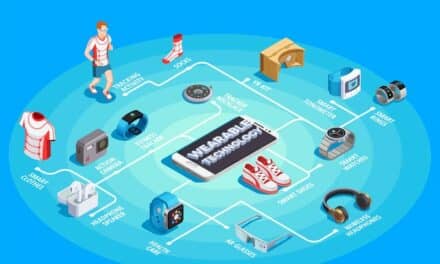In late March 2020, ATI Physical Therapy (ATI) launched its telehealth platform CONNECT. As an essential health care provider during the pandemic, the new virtual platform gave patients a viable option to safely continue with their treatments.
CONNECT was launched under the presumption that virtual PT sessions would be most effective for non-operative patients; patients with lower pain and disability levels; and patients further along in their recovery journey. However, after treating patients through more than 43,000 virtual visits in the year since CONNECT’s launch, ATI has learned telehealth benefits a significantly larger population of patients with a broader range of conditions and pain levels than it first anticipated.
For a technology that experienced slow adoption throughout healthcare prior to the pandemic, telehealth is now widely embraced by providers in every corner of the industry, ATI Physical Therapy explains in a media release.
“Patients with any diagnosis and of any age can benefit from telehealth. I’ve virtually treated an extremely wide range of patients this year – from young patients recovering from a sports injury to people with aches from uncomfortable work-from-home set-ups to a Medicare patient who recovered from total shoulder surgery. Telehealth is for everyone.”
— Mirette Mikhail, PT, DPT, CEIS, MTC, CertDN, Clinic Director at ATI Physical Therapy’s Downers Grove, Illinois clinic
Performed Beyond Expectations
ATI expected younger patients to be the primary telehealth users when CONNECT first launched due to the technology platform; yet, most CONNECT patients over the last year have been older adults. These patients were the ones most at risk of COVID, so they opted for safety with virtual therapy, Mikhail notes in the release.
Beyond the ability to receive treatment in the safety of their own homes, ATI patients see convenience as one of the most prominent benefits of telehealth. Virtual appointments allow patients to access their therapist from anywhere, leading to more consistent care regimens and faster recovery times.
“I actually preferred telehealth to in-person appointments because of my busy schedule. I did virtual PT longer than I would’ve done in-person because it was so easy and flexible.”
— Analisa, a 35-year-old patient in Illinois who was treated via CONNECT after fracturing her shoulder
CONNECT Will Continue
After the threat of COVID ceases, ATI will continue to offer CONNECT due to the positive feedback received from patients and therapists alike.
Included in ATI’s plans is the use of telehealth to treat patients in medical deserts – regions with inadequate access to healthcare – to further access to healthcare needs through PT, the release continues.
“At the beginning of the pandemic, telehealth provided safety from COVID, alleviated the burden on hospitals and doctors’ offices, and allowed for continuity of care when treatment otherwise would have stopped. Now, we see telehealth’s greatest benefit: accessibility.”
“Telehealth makes physical therapy even more approachable, affordable and favorable than it already is. While telehealth does not replace the much-needed hands-on treatment that help produce the best outcomes for our patients, it’s a convenient alternative when in-clinic appointments aren’t an option, whether it’s because of the pandemic, weather or a busy day. With all these benefits, there’s no doubt telehealth is here to stay.”
— Dr. Chuck Thigpen, PhD, PT, ATC and Senior Director of Practice Innovation and Analytics at ATI
[Source(s): ATI Physical Therapy, PR Newswire]
Related Content:
ATI Physical Therapy Launches Online Service





